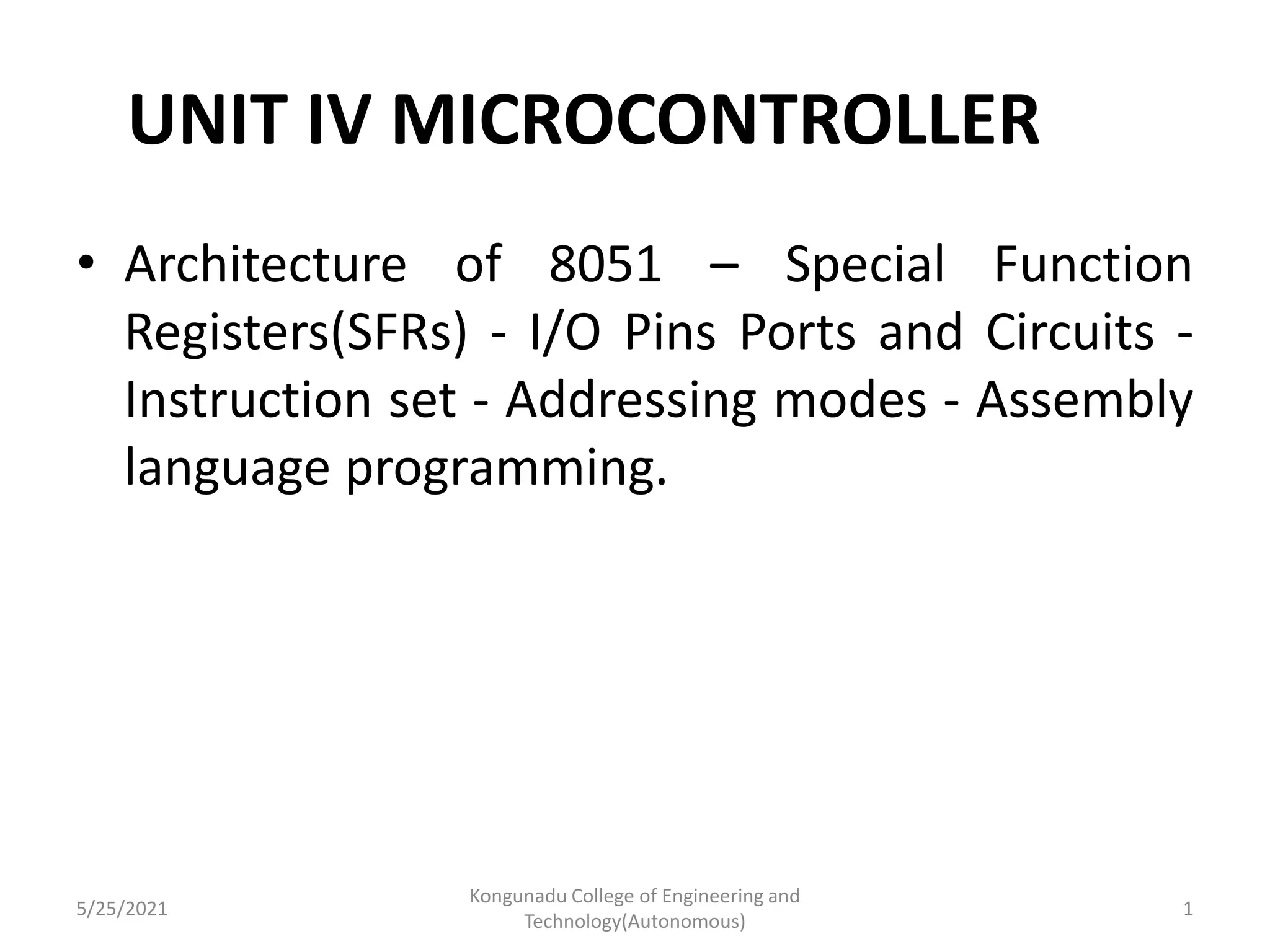The document discusses the architecture of the 8051 microcontroller. It describes the 8051's central processing unit, memory organization, input/output ports, timers/counters, serial port, and interrupts. The 8051 has a CPU, RAM, ROM, and I/O ports integrated into a single chip. It can be programmed to perform control and sensing tasks in embedded systems.







![Intel 8051 microcontroller
• The 8 bit microcontroller 8051 family has
numbers ranging from 8031 to 8751 and are
available in N-channel Metal Oxide
Semiconductor (NMOS) and Complementary
MOS [CMOS] construction in a variety of package
types.
• The intel corporation introduced an 8 bit
microcontroller 8051 in 1981.
• This microcontroller had 128 bytes of RAM, 4k
bytes of on - chip ROM, two timers, one serial
port and 4 eight bit ports all on a single chip.
5/25/2021
Kongunadu College of Engineering and
Technology(Autonomous)
8](https://image.slidesharecdn.com/unit4-210525030207/75/Unit-4-8-2048.jpg)















































